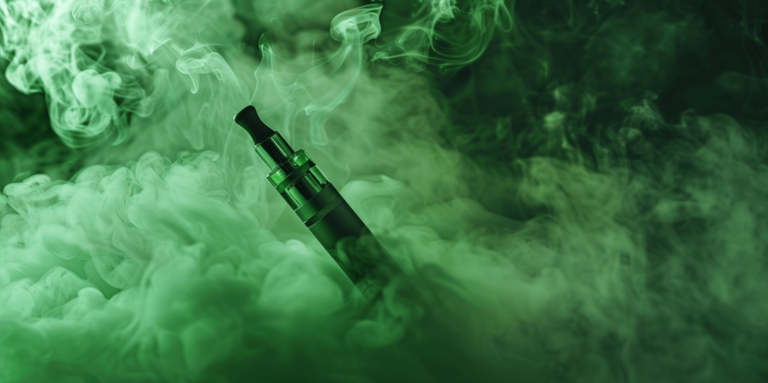How Many Puffs On A Vape Equals One Cigarette?

Many smokers who are considering switching to vaping often wonder how many puffs on a vape equals one cigarette. The answer to this common question depends on several factors, including nicotine concentration, nicotine absorption, and individual vaping habits. By exploring the equivalent ratio between puffs on a vape and cigarettes, individuals can make informed decisions about their nicotine intake.
It’s important to note that finding an exact conversion ratio of puffs equal to many cigarettes may not be possible due to the differences in nicotine delivery between smoking and vaping. However, understanding the factors that affect the number of puffs on a vape needed to equal one cigarette can provide valuable insights.
Exploring Nicotine Concentration
Examining the nicotine concentration in vape juice is essential to understanding the equivalence between puffs on a vape and cigarettes.
Understanding Nicotine Levels in Vape Juice
Vape juice typically comes in various nicotine strengths, such as 8mg and 20mg per milliliter, appealing to those looking for a specific amount of nicotine per puff equal to a cigarette.
The nicotine content in cigarettes may vary, but on average, a single cigarette contains about 10-12mg of nicotine, prompting users to question how many vape puffs equal a cigarette.
The nicotine strength of vape juice plays a significant role in determining how many puffs on a vape would equal one cigarette.
It’s essential to consider the milligrams of nicotine per cigarette when comparing nicotine concentration in vape juice.

Comparing Nicotine Absorption: Vaping vs Smoking
Nicotine absorption varies between vaping and smoking due to their distinct delivery systems, with many wondering how many hits on a vape equals a cigarette. Understanding how nicotine is absorbed in the body is essential in comparing the two.
How Nicotine is Absorbed in the Body
- Smoking a cigarette: When a person smokes a cigarette, nicotine is inhaled into the lungs, where it is rapidly absorbed into the bloodstream. The lungs provide a direct route for nicotine absorption, allowing it to reach the brain quickly.
- Vaping: In contrast, vaping delivers nicotine through an aerosolized vapor that the user inhales. Once inhaled, the nicotine is absorbed through the lungs and enters the bloodstream. However, the absorption rate of nicotine may vary depending on the vaping device, such as a disposable vape, and individual smoking habits.
The differences in nicotine absorption rates between vaping and smoking impact the equivalence between puffs on a vape and cigarettes. It’s important to consider these variations when comparing nicotine intake and consumption between the two methods. While smoking provides a direct pathway for nicotine to be absorbed into the body, vaping requires the nicotine to be inhaled as part of an aerosolized vapor. This distinction influences the speed and efficiency of nicotine delivery in each method.
Understanding the differences in absorption can assist individuals in making informed decisions about their nicotine consumption and selecting the most suitable method for their needs.
Estimating the Ratio of Puffs to Cigarettes
Several factors come into play when estimating the ratio of puffs on a vape to cigarettes. While there is no exact conversion, understanding how many puffs of vape are equal to a cigarette can help individuals make informed decisions about their nicotine intake.
Factors Influencing the Puff-to-Cigarette Ratio
On average, many vapers believe that it takes somewhere between 30-50 puffs on a vape to ingest a similar amount of nicotine as smoking one cigarette. However, this estimate can vary based on individual circumstances.
The amount of nicotine contained in the vape juice is a significant factor. Different vape juices have varying concentrations of nicotine, and this can affect the number of puffs needed to achieve the same nicotine intake as a cigarette.
Personal smoking habits also play a role. Factors such as the number of cigarettes smoked per day and the frequency of smoking sessions can impact the puff-to-cigarette ratio. Additionally, the dosage of nicotine that individuals need to satisfy their cravings can vary.
Another consideration is the type of vaping device used. Disposable vapes, for example, are designed to deliver a specific dosage of nicotine and may require fewer puffs to ingest a similar amount compared to other devices.
It’s important to note that as the vape liquid runs out, the dosage of nicotine per puff may decrease, influencing how many vape puffs equivalent to cigarette. Regularly checking and refilling vape juice can help maintain a consistent nicotine intake.
Overall, estimating the ratio of puffs to cigarettes is a personal journey that may involve switching to a disposable vape or other vape devices. It may require some trial and error to find the right balance that satisfies nicotine cravings without excessive intake, especially when considering how many puffs equal one cigarette. Consulting with experienced vapers or experts can provide valuable insights and guidance during this transition from smoking to vaping.
How Do Smoking and Vaping Habits Influence Nicotine Consumption?
Effects of Smoking and Vaping Habits on Nicotine Intake
Smoking and vaping habits play a significant role in determining nicotine consumption. Individuals who switch from smoking to vaping may experience changes in their nicotine intake, often questioning how many puffs of a disposable vape are equal to a pack of cigarettes. Some individuals may find that they use much nicotine when vaping compared to smoking, while others may reduce their nicotine consumption over time.
Understanding the amount of nicotine per milliliter in vape juice is crucial when determining how smoking and vaping habits influence nicotine delivery. Vape juice typically comes in different nicotine strengths, ranging from low to high concentrations. To estimate nicotine intake accurately, it’s crucial to consider the total nicotine content consumed per day, as represented by vape juice and disposable vape usage, as well as individual vaping habits.
Factors such as the type of vaping device used and the frequency of vaping also impact nicotine consumption. For instance, using a high-powered vaping device may deliver more nicotine per puff compared to a less powerful device. Similarly, individuals who vape frequently throughout the day might consume more nicotine overall.
Switching from smoking to vaping requires a personalized approach to finding the right balance of nicotine for each individual. Some individuals may need to adjust their vaping habits and nicotine strength to ensure they are getting the desired nicotine intake without using more nicotine than necessary.
By analyzing smoking and vaping habits, individuals can make informed decisions about their nicotine consumption and tailor their vaping experience to their specific needs. It’s essential to strike a balance that satisfies nicotine cravings while minimizing the potential harm associated with smoking.
Conclusion
In summary, the question of how many vape puffs equivalent to cigarette has yet to have a definitive answer. Various factors influence the equivalence between puffs and cigarettes, including nicotine concentration, absorption rates, individual habits, and nicotine strengths in vape juice.
For individuals considering switching from smoking to vaping, it is important to recognize that finding the exact number of puffs can be challenging. Instead, a personalized approach is recommended. Assessing personal vaping needs, consulting with experts, and experimenting with different nicotine intake levels can help individuals find a satisfying balance that meets their cravings.
Switching to vaping can be an effective way to reduce nicotine consumption and potentially decrease the harmful effects associated with smoking. However, it is crucial to approach the transition with caution and make informed decisions when switching to a vape device. By understanding the complexities involved in the equivalence between puffs and cigarettes, individuals can navigate the world of vaping with greater confidence and achieve their desired nicotine intake level.
In summary, the number of puffs needed to equal one cigarette on a vape is not straightforward. It varies based on multiple factors, and finding an exact conversion ratio is challenging. To make the switch from smoking to vaping, it is best to evaluate personal needs, seek guidance, and experiment to discover what works best. Ultimately, by choosing to vape using devices like disposable vapes, individuals have the opportunity to reduce their nicotine consumption and mitigate the harms of smoking a pack of cigarettes.
